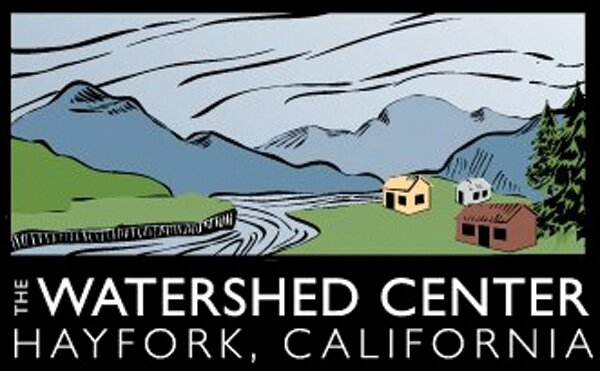The Watershed Center & Yurok Tribe Restore Habitat in the South Fork Trinity River (SFTR)
Protecting and rehabilitating key fish species in our local watersheds is a top priority for the Watershed Stewardship Program and our dedicated professional partners.
Chinook salmon populations have plummeted precipitously and many organizations are working in tandem to recover their numbers by increasing the amount of woody debris in the river channel, increasing the amount of water available to fish in the dry summer months, and cleaning up cannabis grow sites leaching toxic chemicals. Projects such as these will hopefully turn the tide for our salmonids.
The South Fork Trinity River, the largest tributary to the mainstem Trinity River, experienced multiple landslides in the past that filled the channel with large sediment deposits, reducing the depth of pools necessary for spring Chinook to survive the summer. Historical logging has reduced the availability of large wood that would create dynamic aquatic habitat in the channel.
To correct this aquatic habitat deficit, The Watershed Center, Yurok Tribe, U.S. Forest Service, Trinity County Resource Conservation District have implemented two large wood loading projects in the SFTR with the goal of restoring geomorphic processes and improving salmon habitat.
Phase I of the project was implemented in 2018 within the middle reach of the SFTR, upstream of its confluence with Butter Creek. Phase II was implemented in 2022 within the upper reach of the SFTR, upstream of Forest Glen.
A Chinook helicopter was contracted to place over 300 Phase I logs and 140 Phase II logs directly into the stream channel. In Phase II, an additional 40 logs were moved into the channel by a cable yarder. These massive trees—with their rootwad still attached—were sourced from nearby burn footprints and strategically positioned in the stream to slow water down, scour out sediment to create deeper pools, and provide refuge for juvenile fish and the food they depend on.
The winter of 2022-2023 has already proven to be exceptionally precipitous, and this page will be updated with aerial before-and-after photos to demonstrate how far the logs have been carried downstream and where they were ultimately deposited.





